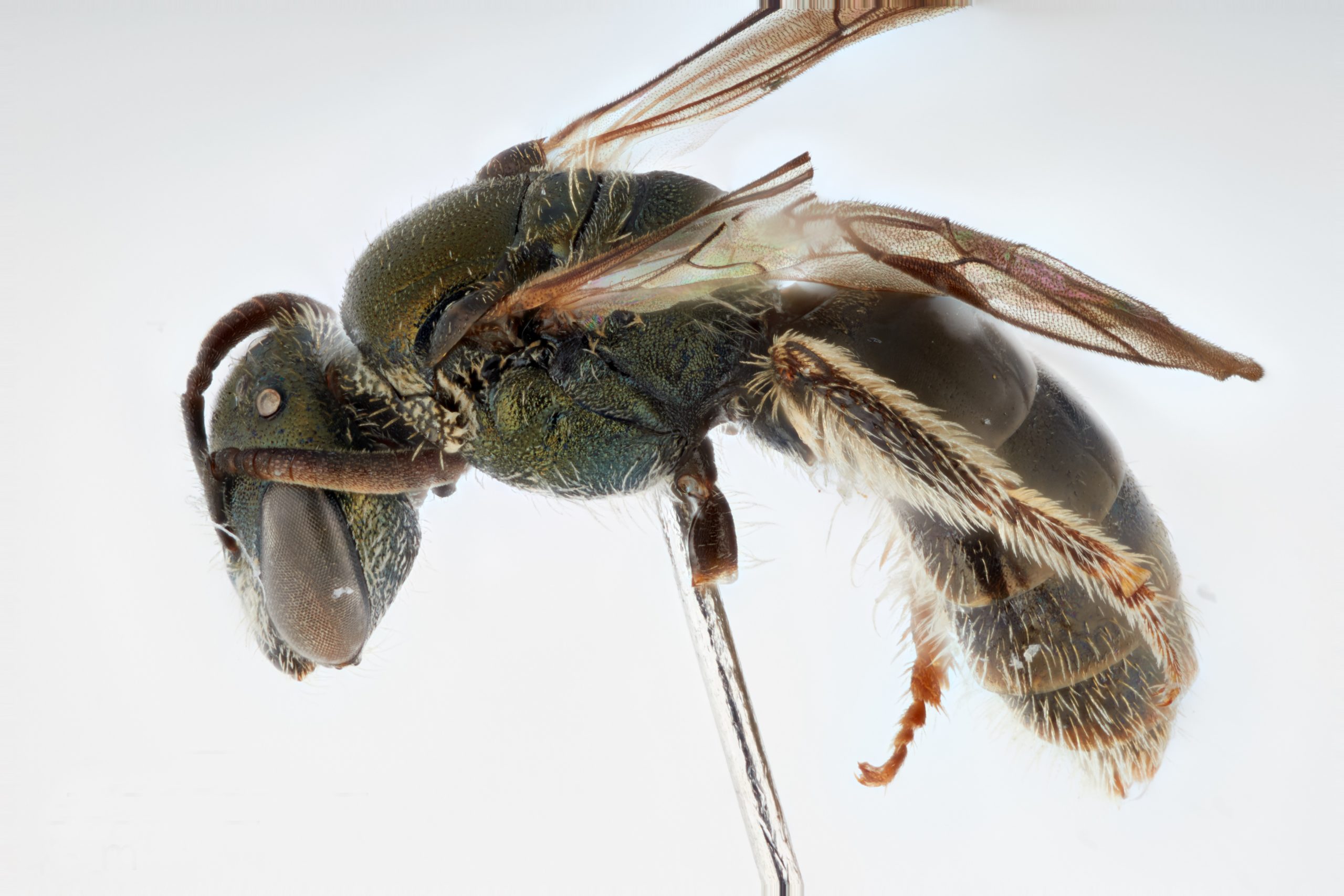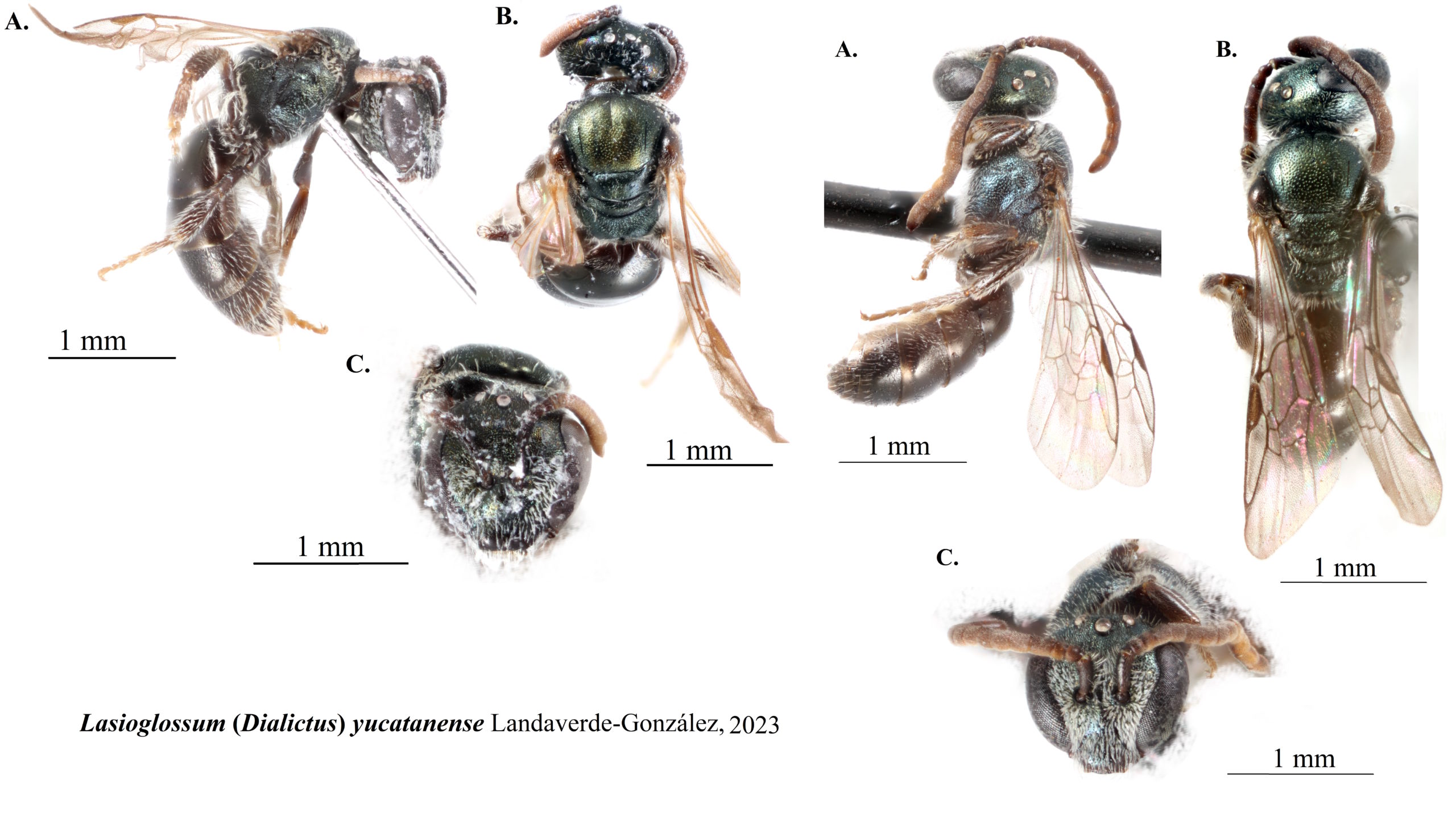Researchers describe seven important pollinators in Yucatán
 A collection specimen of the bee genus Lasioglossum from the Entomology at the Museum of Nature Hamburg. © LIB
A collection specimen of the bee genus Lasioglossum from the Entomology at the Museum of Nature Hamburg. © LIB
Lasioglossum is a genus of bees that is widely distributed. Species of this genus do not differ morphologically very much, making it very difficult for researchers to identify different species. In a new study, researchers, including LIB insect expert Martin Husemann, were able to identify and describe seven new species living on the Mexican Yucatán Peninsula based on genetic and morphological data.
Previous studies have shown that bees of the genus Lasioglossum are important pollinators of crops in America. The Yucatán Peninsula is located in southeastern Mexico, separating the Caribbean Sea from the Gulf of Mexico – this geographic location makes the region a unique hotspot of biodiversity.
“Especially the pollinating insects will become an important factor for future research with the advancing loss of biodiversity. With the identification keys, we give our colleagues on site the opportunity to identify the native species and thus better understand their ecology,” says Dr habil Martin Husemann, head of the Hemimetabola & Hymenoptera section at the Leibniz Institute for Biodiversity Analysis. He worked on the study under the direction of Dr Patricia Landaverde from the Martin Luther University Halle-Wittenberg.

One of the seven newly described species (L. yucatanense) was named by Manfred Stark, who won a corresponding competition in 2016. He decided to name the species after its place of origin. © Patricia Landaverde
While “only” 45 species of the subgenus Dialictus from Mexico and Guatemala are known so far, it is still one of the most species-rich in the world. A large part of the diversity remains undescribed so far, as there are no comprehensive on-site investigations in Central America. Therefore, investigations of collections, some of which are curated at the Museum of Nature Hamburg, continue to reveal new species that were previously unknown due to the combination of biogeographic barriers, high diversity, and lack of taxonomic work.
Source
Landaverde-González P., Gardner J., Moo-Valle H., Quezada-Euán J.J.G., Ayala R. & Husemann M. 2022. Seven new species of Lasioglossum (Dialictus) Robertson, 1902 (Hymenoptera: Halictidae: Halictini) from the Yucatán Peninsula, Mexico. European Journal of Taxonomy 862: 1–65. https://doi.org/10.5852/ejt.2023.862.2079
Contact
Dr habil Martin Husemann
Head of Hemimetabola & Hymenoptera Section, Invertebrates Division
Email: m.husemann@leibniz-lib.de


